Blackline Safety is a technology leader driving innovation in the industrial workforce through IoT (Internet of Things). With connected safety devices and predictive analytics, Blackline enables companies to drive towards zero safety incidents and improved operational performance. Blackline provides wearable devices, personal and area gas monitoring, cloud-connected software and data analytics to meet demanding safety challenges and enhance overall productivity for organizations with coverage in more than 100 countries. Armed with cellular and satellite connectivity, Blackline provides a lifeline to tens of thousands of people, having reported over 200 billion data-points and initiated over seven million emergency alerts. For more information, visit BlacklineSafety.com and connect with us on Facebook, Twitter, LinkedIn and Instagram.
Harness the Power of Connected Safety in the Water and Wastewater Industries
Blackline Safety, Leader in Connected Gas Detection & Lone Worker Safety
February 08, 2022
Next level protection and performance
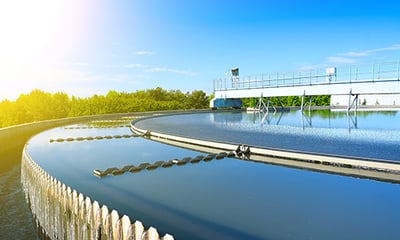 In step with other industries around the world, the water and wastewater sector is evolving beyond a compliance-only approach to safety. Holistic technology solutions that support a more connected, digitized and data-driven operational program are fast becoming the standard. Not only are they proven to reduce response time to incidents, but connected workers have been shown to increase productivity by 8% and reduce operational spend by 8.5% (Visual Capitalist, 2021).
In step with other industries around the world, the water and wastewater sector is evolving beyond a compliance-only approach to safety. Holistic technology solutions that support a more connected, digitized and data-driven operational program are fast becoming the standard. Not only are they proven to reduce response time to incidents, but connected workers have been shown to increase productivity by 8% and reduce operational spend by 8.5% (Visual Capitalist, 2021).
That's important for an industry that faces increased demand on their services and resources, while constrained to do more with less. Scarcity of accessible fresh water is becoming a severe threat to the prosperity and sustainability with over half of water professionals surveyed by the American Water Works Association in 2021 ranking long-term water supply availability as a critical (Nasdaq, 2021). To meet the increasing demand for water, the water and wastewater treatment market is expected to double by 2028 (Statisca, 2022).
“The scarcity of accessible fresh water is becoming a more severe threat to the prosperity and sustainability of all human societies.” (Nasdaq, 2021)
Connected devices build up trust and confidence, your people have the support they need to get the job done safely—a positive employee experience and loyalty naturally follow. And they create trust with your neighboring communities that your facilities are well-monitored and operated safely.
From cloud-connected devices that continuously monitor for safety incidents in real-time to quantitative data and insights dashboards, a comprehensive connected safety solution reveals opportunities to take safety—and your organization as a whole—to the next level.
Common health and safety risks for industry workers
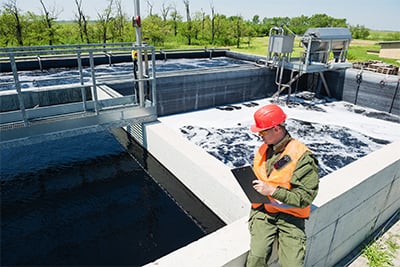 Workers in the water industry perform many types of activities to meet requirements across various worksites. They may be required to supervise wastewater plants, monitor flow meters, or check water quality at remote pumping stations or reservoirs. These tasks have inevitable risks: high voltage materials, hazardous or contaminated water, poisonous chemicals, and toxic or explosive gases. Even traffic can be a concern, with job sites close to fast-moving vehicles prone to higher workplace risks.
Workers in the water industry perform many types of activities to meet requirements across various worksites. They may be required to supervise wastewater plants, monitor flow meters, or check water quality at remote pumping stations or reservoirs. These tasks have inevitable risks: high voltage materials, hazardous or contaminated water, poisonous chemicals, and toxic or explosive gases. Even traffic can be a concern, with job sites close to fast-moving vehicles prone to higher workplace risks.
Working in confined spaces such as sewers, pipelines, storage tanks or access tunnels is common. These environments create the risk of oxygen deficiency, extreme temperatures or exposure to elevated levels of hydrogen sulfide (H2S) and other toxic gases. The wide spectrum of chemicals used in treatment facilities, like chlorine (Cl2) and ammonia (NH3), can pose significant health risks for workers. Toxic gas in these environments is extremely hazardous, in addition to gases produced because of wastewater and treatment processes, like hydrogen sulfide and sulfur dioxide (SO2).
Risks intensify in the case of remote or lone workers. Workers out of sight and constant direct contact with coworkers, can face a single slip, trip or fall, a health condition, or an extreme weather event that can turn deadly without an easy way to access help.
Add it all up and you need a versatile and scalable solution for protection against all the risks your industry workers face—whether from working alone, confined spaces, slips and falls or harmful gases—while ensuring you have the quickest way to reach them should the worst occur. That’s where connected technology can help.
58% of accidents in the water and wastewater industry were the result of structural failure from aging infrastructure and 13% were the result of extreme weather. (Journal of Loss Prevention in the Processing Industry, 2021)
The best data for the best response
The key is leveraging cloud-connectivity for real-time visibility by having your hardware, like wearable personal gas monitors or portable area monitors, connected to the cloud and to the right software through a seamlessly integrated solution. While the hardware collects data, the software provides you with visual data analysis and insights (see Blackline Analytics) so you can effectively respond to incidents, get ahead of risks, and drive a more proactive safety culture. A comprehensive hardware-plus-software connected solution gives every team in an operation a single, go-to place (accessible anytime, anywhere from any Internet connected device) for the information and support required to enhance operational efficiency alongside worker and worksite safety.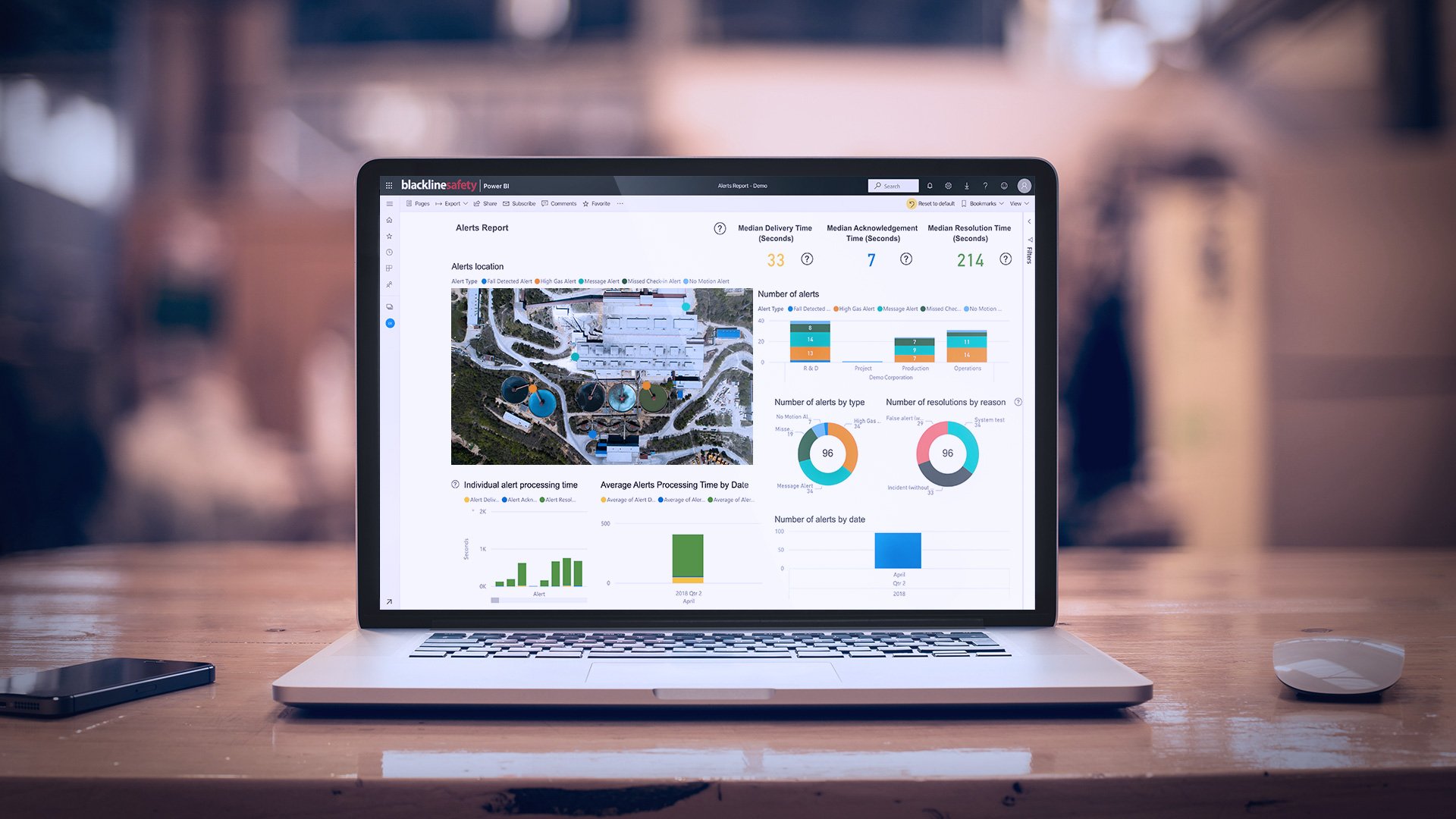 Real-time data to support a precise, robust and informed response is powerful. With cloud-connected real-time data, safety managers can have continuous situational awareness. That means being able to see the state of workers and monitoring their safety in the field at all times. It means getting gas exposure alerts, person-down alarms, and manual safety triggers so you can act swiftly. Pair it with professional, live 24/7 monitoring and you’re equipped with quick response capabilities to protect your people.
Real-time data to support a precise, robust and informed response is powerful. With cloud-connected real-time data, safety managers can have continuous situational awareness. That means being able to see the state of workers and monitoring their safety in the field at all times. It means getting gas exposure alerts, person-down alarms, and manual safety triggers so you can act swiftly. Pair it with professional, live 24/7 monitoring and you’re equipped with quick response capabilities to protect your people.
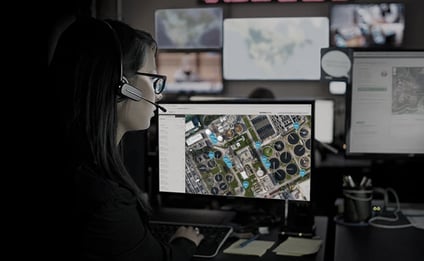
Blackline Safety’s in-house Safety Operations Centre has an industry-leading response time of less than 60 seconds to respond to an emergency alert, 99% of the time.
Monitoring is even more critical in the context of lone workers, a common workplace reality in water and wastewater industry, with employees working beyond sight and sound in several scenarios:
- Personnel working remotely and independently where they could slip and trip or suffer an injury from heavy machinery
- Older workers who face an increased risk of a health incident
- Workers in and out of multi-floor pumping stations and throughout the facility in above ground buildings
- Team members working alone around the clock, sometimes being called out to check on pumps by themselves
- Long periods of time alone on the road
Complete safety for every worker—whenever and wherever
Cloud-connected wearable devices can ensure every team member is never truly alone, whether in a busy treatment plant or out in the field, with the added insurance they are connected to a lifeline that links them to immediate help if needed, should an accident, health event, gas exposure or weather event occur. Reliable connectivity can also provide reassurance that their safety is accounted for, no matter how remote their work may be.
Current connected safety technology can combine all the following benefits to protect those at risk:
Call for immediate assistance – devices that have two-way voice communication via text or optional push-to-talk, offer a way for your workers to quickly reach out for help, regardless of the circumstances and can put their mind at ease that they have someone on the line looking out for them. Fall detection – the ability to detect an unusual impact or any drastic changes in tilt to indicate a potential slip, trip or fall. Once identified, the device can trigger an emergency alert, even if the device wearer is knocked unconscious.
Fall detection – the ability to detect an unusual impact or any drastic changes in tilt to indicate a potential slip, trip or fall. Once identified, the device can trigger an emergency alert, even if the device wearer is knocked unconscious. No motion detection – an accelerometer in a device can also detect if a worker has stopped moving for some time. This can indicate several hazardous situations a worker may have encountered, such as loss of consciousness while stationary, which would not trigger a fall alert.
No motion detection – an accelerometer in a device can also detect if a worker has stopped moving for some time. This can indicate several hazardous situations a worker may have encountered, such as loss of consciousness while stationary, which would not trigger a fall alert.
Missed check-in – for lone workers in the field or working independently in a plant for an extended period, rather than relying on emails, phone calls or other manual methods prone to human error, regular check-ins can be automated using a pre-configured countdown timer. With a push of a button, the worker can acknowledge that they are OK at pre-set intervals without a supervisor needing to directly contact the worker to check and verify their wellbeing. If a check-in is missed and the worker fails to respond to a warning alert, the device can trigger a tailored emergency response workflow.
– for lone workers in the field or working independently in a plant for an extended period, rather than relying on emails, phone calls or other manual methods prone to human error, regular check-ins can be automated using a pre-configured countdown timer. With a push of a button, the worker can acknowledge that they are OK at pre-set intervals without a supervisor needing to directly contact the worker to check and verify their wellbeing. If a check-in is missed and the worker fails to respond to a warning alert, the device can trigger a tailored emergency response workflow.
Gas detection – in the water and wastewater industry there are a wide array of gas hazards depending on the situation. Whether it be exposure to explosive and flammable gases (LEL), common hazardous gases such as hydrogen sulfide (H2S), carbon monoxide (CO) and other toxic gases or oxygen depletion, early detection and notification of the atmospheric hazard is crucial. Connected safety monitoring devices can also send gas detection data that is below alarm levels which help organizations identify a facility’s potential hazards before they become an incident and take proactive measures to correct or repair the issue before it results in worker injury.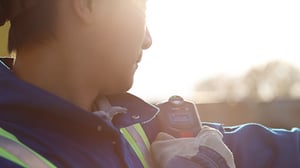 Two-way communications –informing workers of impending weather events, work updates (e.g. change in muster point locations) or other vital information, being able to connect with every worker via two-way voice or text communications is key. In the event of an injury, it provides the worker with confidence that someone has their back and can respond to their need for assistance no matter what the event may be.
Two-way communications –informing workers of impending weather events, work updates (e.g. change in muster point locations) or other vital information, being able to connect with every worker via two-way voice or text communications is key. In the event of an injury, it provides the worker with confidence that someone has their back and can respond to their need for assistance no matter what the event may be.
These benefits, including live monitoring capabilities by safety personnel, are attainable using a single connected safety device, such as G7 personal wearables or G7 EXO area monitor.
Easy-to-use devices actually get used!
With any new device, the less barriers to adoption for workers, the better. The simpler the devices are to turn on and instantly connect to the cloud (without additional network requirements), the better chance they will be used rather than being left on the seat of the truck.
Look for these capabilities:
✓ Connects in seconds with a push of a button through built in cellular connectivity, or in North America, optional satellite for remote locations
✓ Straightforward bump tests and calibrations with onus on the user to keep their devices compliant so they are responsible and accountable
✓ No manual updates for firmware and configuration updates by HSE or managers. Updates should be over-the-air so devices are always current without downtime
✓ Intuitive user interfaces that translate to minimal training requirements
✓ Automatic file transfers and downloads with no more time spent on the complicated task of piecing together information for incident reporting
Scalable solutions for a low cost of ownership
And the best benefit of all? Connected devices save you time and money protecting your technology investment. For example, Blackline’s G7 devices are completely customizable and can be configured to accommodate diverse gas detection and safety monitoring needs depending on the hazard present.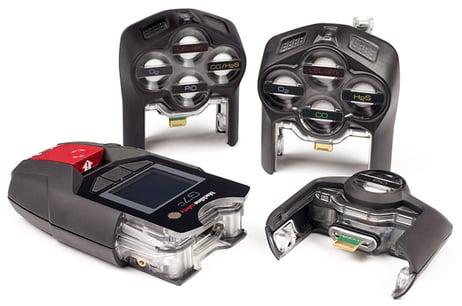 This interchangeability includes no-gas lone worker, single-gas, multi-gas and multi-gas pump devices. So instead of a new device, a no-gas lone worker device can be upgraded to a multi-gas pump detector (or anything in between) by just changing out a cartridge. Safety devices are no longer limited to one function. G7 can start life as a connected single-gas detector and be updated over time to support multiple gas sensors, walkie-talkie functionality and advanced lone worker monitoring.
This interchangeability includes no-gas lone worker, single-gas, multi-gas and multi-gas pump devices. So instead of a new device, a no-gas lone worker device can be upgraded to a multi-gas pump detector (or anything in between) by just changing out a cartridge. Safety devices are no longer limited to one function. G7 can start life as a connected single-gas detector and be updated over time to support multiple gas sensors, walkie-talkie functionality and advanced lone worker monitoring.
If company policy or legislation updates require sensor alarm levels or other device set-up changes to be made, G7 settings can be configured quickly and confidently from an online portal called Blackline Live —one simple profile change, and you’ve updated the entire fleet over-the-air. In addition to portable gas detectors, area monitors can be used to create a monitoring perimeter around a facility to protect the surrounding area while confirming the levels of gases which may cause odor issues and complaints. Because these devices automatically connect directly to Blackline Live, there’s no limit on the number of devices in your network – so you can see the real-time safety status of every unit in your operation.
A connected platform can make worksites safer without costly and time-consuming IT infrastructure change—no setting up MESH networks, line-of-sight issues or ensuring a strong Wi-Fi signal throughout the facility. MESH networks also often limit the total number of devices that can be connected to the network at the same time, making it a poor option for maintaining connectivity across large-scale safety solutions.
Ready to learn more?
Interested in discovering all the ways our technology can save lives and transform the waster and waste water industry?
Get In Touch
Let’s start a discussion about your safety challenges and needs.
Related Blog Posts
Why Cloud-Connected Safety Solutions Are a Game-Changer
July 10, 2024
Cloud vs. On-Premises: What’s Right for Your Workers? What does it mean to connect safety devices through on-premises docking stations or gateways...
Cool Under Fire: How Blackline Safety is Transforming Emergency Response
June 26, 2024
Real-time data and advanced gas monitoring technology empower fire and hazmat teams to tackle the toughest emergencies with confidence As dangerous...
Workplace Violence and Lone Workers
March 06, 2024
Strategies to Get Ahead of a Rising Risk Lone workers, due to the nature of working alone without access to others, are highly vulnerable. One of...




